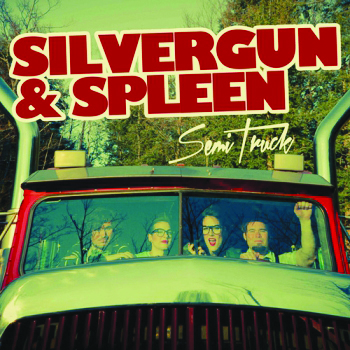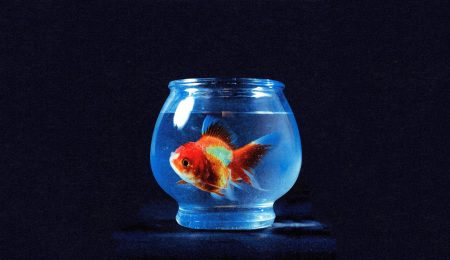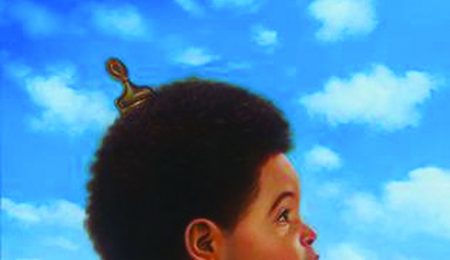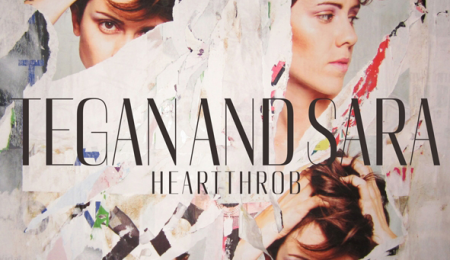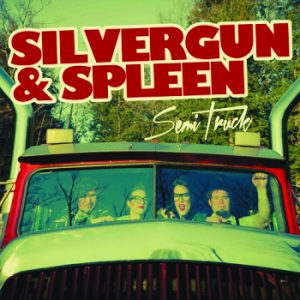 Silvergun & Spleen
Silvergun & Spleen
Semi Truck | Maple Music
4 / 5
MY FIRST INTRODUCTION to Silvergun & Spleen was an online video clip of an edgy brunette jumping around onstage, donning a pin-up hairdo, retro exercise shorts, knee-high athletic socks, and an OBEY T-shirt. Though the sound quality of that recorded live show was not the best, the Ottawa natives’ new album Semi Truck—released Sept. 11—delivers a full and infectious sound.
The first track on the album, “Just Enough to Dance,” introduces sister songbirds Marie-Eve and Veronique Mallet—a.k.a. “Merv” and “Vern”—as the rich vocalists they are. As Semi Truck plays out its nine-song sequence, the guitars, keys, and drums prove tight and powerful while the vocals ceaselessly command the attention of the audience.
The majority of the tracks are catchy and upbeat, and at the forefront of these is track four, “Crack.” The song’s synthetic beat and punk-inspired bass lines and power chords make for a sound reminiscent of Metric, Die Mannequin, and Paramore. The song also incorporates some hilarious lyrics and tops it all off with a cowbell.
Semi Truck is Silvergun & Spleen’s second studio album, and all in all, it expresses itself as the edgy and sometimes dark musical reflections of a woman (or in this case women) scorned—and it works wonders. With the band often playing intimate music venues across Canada, be sure to check out Ottawa’s own Silvergun & Spleen the next time they book a local show.
—Dana Simpson
 Delhi 2 Dublin
Delhi 2 Dublin
Turn Up the Stereo | Self-released
1.5 / 5
DELHI 2 DUBLIN is a band that would like you to think their roots are based firmly in traditional Celtic and Bhangra music. But in actuality, they’re about 80 per cent generic house/pop music and 20 per cent Celtic and Bhangra.
For the most part, the Vancouver-based group sounds a lot like the brand of electronic pop you might hear in a club, but will occasionally break away into a frenzied Irish-violin bit or some Bhangra drums or vocals. Rather than merging well and offering a unique sound, these variances seem abrasive and unwelcome, arbitrarily trying to fit into a slot that just wasn’t made for them.
Turn Up the Stereo is a misguided attempt at being both something traditional and something fresh—a dangerous combination when executed poorly.
What I will say for it, though, is that the physical copy of the album contains some wicked art. If you’re looking for a tiny poster, you can get it and cut the cover off, as I have done. It looks cool on a wall, or propped up on a desk. Beyond that, though, I’d skip this one.
—Brennan Bova
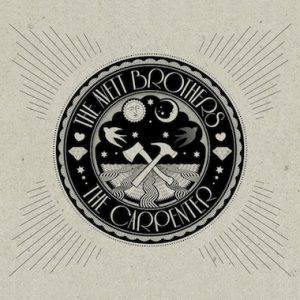 The Avett Brothers
The Avett Brothers
The Carpenter | Universal Republic
3.5 / 5
GROWING OLD AND dying are the two prominent themes of The Avett Brothers’ seventh studio album, The Carpenter, and maybe in conjunction with those themes, they’ve recorded a work that feels in many ways softer and more measured than their raw and emotional offerings of the past. Indeed, some might argue that the polish on some tracks edges the album toward pop, but the brothers’ North Carolinian folk roots (hey, banjos!) are still very apparent throughout the thoughtful and generally sweet-sounding album.
The Avetts, along with producer Rick Rubin, chose well in kicking off the album with “The Once and Future Carpenter,” as the track showcases Avett lyricism at its best and gently introduces the record’s heavy themes, before the depressing “Winter in My Heart” rolls around two songs later.
“A Father’s First Spring” is a highlight, with a touch of violin to back up a pretty little acoustic riff and absolutely beautiful lyrics, and “Geraldine” offers a nice breath of whimsy in one of the few departures from the album’s persistent sombreness, before things go weirdly wrong with “Paul Newman vs. The Demons.” Fortunately, the brothers tie things up neatly with “Life,” where their vocal harmonies shine.
Ultimately, The Carpenter is a success, though a minor one. While some might miss the simplicity and rough edges of earlier albums like The Second Gleam, The Avett Brothers’ latest effort is a contemplative and mature work that serves to satisfy those who are already fans of the folk-rock genre.
—Keeton Wilcock
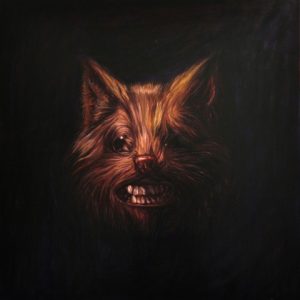 Swans
Swans
The Seer | Young God
4.5 / 5
IF 2012 IS indeed the year that the world is going to end, then it may at least finally be the year that Swans and their mysterious leader Michael Gira finally get their due praise. The group’s blend of art-rock, folk, epic post-rock passages, and angry heaps of noise have gained them a small but loyal following since their earth-shattering debut Filth hit unsuspecting ears in 1983. Regardless of their short reach, influential artists such as Kurt Cobain and Godspeed You! Black Emperor have cited Swans as an influence.
The album lives up to its description by Gira as “a culmination of 30 years of work,” as The Seer indeed combines virtually every sound from every period of the band’s varied history, with wonderful results. From the terrifyingly noisy guitar buildups of the 32-minute title track to the beautiful folk stylings displayed during “Song for a Warrior”—an unlikely collaboration featuring Yeah Yeah Yeahs singer Karen O—diversity is the name of the game here.
The album’s only real con is that it runs for just about a full two hours. But take the time to listen to it all in one sitting and you’ll be rewarded with a chilling, apocalyptic atmosphere that demonstrates why Michael Gira remains one of the best and most underappreciated underground musicians of our time.
—Max Szyc

